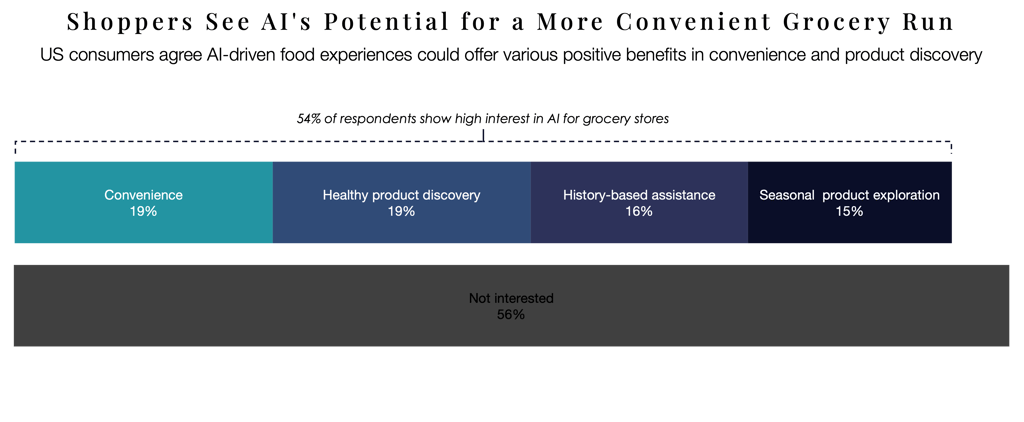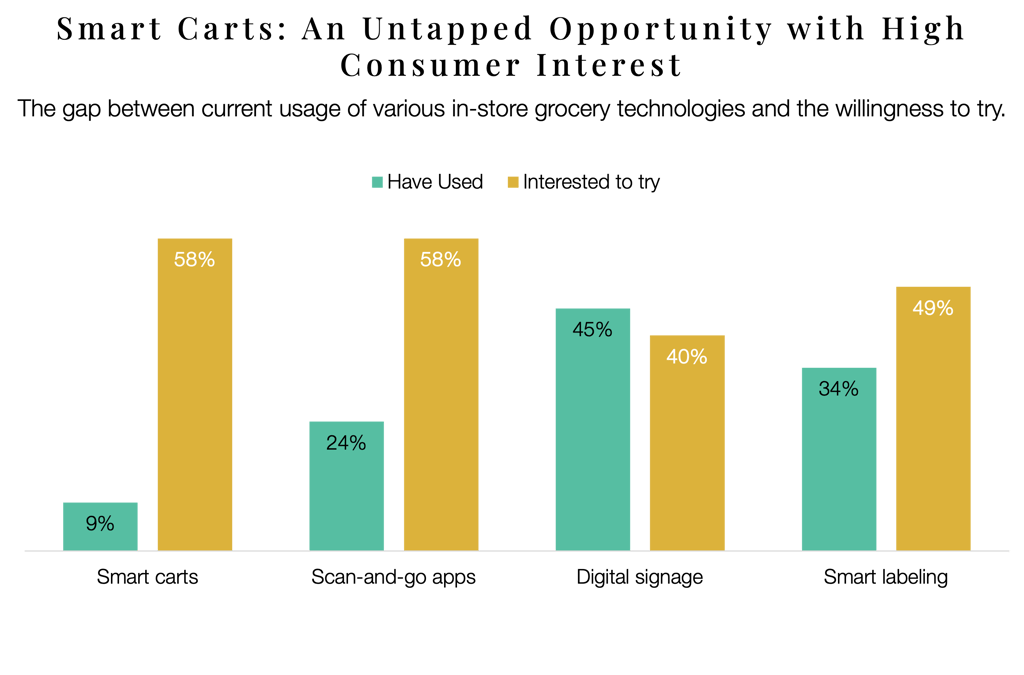AI in Retail: A Look into AI for Inventory Management in Grocery Stores
Explore the transformative impact of AI in grocery retail. This deep dive for grocery business owners covers how AI for inventory management is revolutionizing predictive, reducing food waste, and enhancing in-store technology.
AI IN RETAIL AND ECOMMERCE
Garret Farmer-Brent
8/4/20253 min read


The US grocery industry operates on notoriously thin margins. It's a high-stakes balancing act between keeping shelves stocked with fresh products and minimizing the crippling cost of spoilage. For decades, grocers have relied on experience and historical sales data to walk this tightrope. But in an era of supply chain disruptions and rapidly changing consumer habits, that's no longer enough.
Enter Artificial Intelligence. AI is moving out of the tech lab and into the supermarket aisle, offering powerful solutions to the sector's most persistent operational challenges. For US grocery retailers, implementing a strategic AI in grocery retail plan is no longer a futuristic luxury; it's a competitive necessity.
This deep dive explores the three core areas where AI is making the most significant impact: predictive inventory, waste reduction, and the in-store customer experience.
The End of Stockouts and Spoilage: AI-Powered Predictive Inventory
The greatest challenge in grocery retail is managing inventory. Overstock perishable goods and you lose money to spoilage. Understock a popular item and you lose sales and customer trust. Predictive inventory management, powered by machine learning, offers a sophisticated solution.
AI algorithms analyze complex datasets that go far beyond last week's sales figures. They can process:
Historical sales data down to the SKU level.
Weather forecasts (e.g., predicting a surge in demand for barbecue items ahead of a sunny weekend).
Local events (e.g., a major sporting event or festival).
Promotional calendars and competitor pricing.
Social media trends and consumer sentiment.
By synthesizing this information, AI can forecast demand with a level of accuracy that is impossible to achieve manually, ensuring optimal stock levels that reduce waste while maximizing availability. While consumers themselves are still warming up to the idea of AI in their personal shopping, they recognize its potential to make the experience better.


From Waste to Value: AI's Role in Reducing Food Spoilage
Food waste is a multi-billion dollar problem for the grocery industry. AI tackles this head-on, not just through better ordering but also with intelligent in-store interventions.
The most effective tool in this fight is dynamic pricing. AI-powered systems can connect to a store's inventory management system and automatically reduce the price of products as they near their sell-by date. This isn't a manual process of applying discount stickers; it's an automated, data-driven strategy that can:
Optimize markdowns to maximize the chance of a sale while minimizing the discount.
Reduce the labor costs associated with manually managing expiring inventory.
Provide valuable data on the effectiveness of different price points.
By turning potential waste into revenue, AI provides a direct and measurable boost to a grocery store's bottom line.
Reimagining the In-Store Experience: AI in the Aisles
While online grocery is growing, the physical store remains the heart of the industry. In-store retail technology powered by AI is making that experience more efficient, personalized, and seamless.
Key innovations reshaping the US grocery store include:
Smart Carts: These intelligent shopping carts are equipped with scanners and payment technology, allowing customers to scan items as they go and check out without ever waiting in line. They can also feature screens that display personalized promotions based on the customer's location in the store and their loyalty data.
Smart Shelves: Using weight sensors and cameras, smart shelves can monitor stock levels in real-time, instantly alerting staff when an item is running low. This drastically reduces the chance of a product being out-of-stock and improves on-shelf availability.
Computer Vision: AI-powered cameras can analyze shopper traffic patterns to optimize store layouts, identify long checkout queues to open new registers, and ensure compliance with safety standards.
These technologies aren't just gimmicks; they solve real customer pain points and are met with significant interest, even if current adoption is low.
Source: Algolia as cited in Chain Store Age


Source: EMARKETER
The Future is Now for AI in Grocery
The data is clear: AI is no longer on the horizon for US grocery retailers; it's here, solving the industry's most fundamental challenges. From the distribution center to the checkout line, AI is creating a more efficient, less wasteful, and more customer-centric grocery ecosystem.
For business owners, the path forward involves a strategic embrace of this technology. It begins with building a strong data infrastructure, identifying the most pressing operational bottlenecks, and piloting AI solutions that deliver a clear and measurable return on investment. The grocers who successfully integrate AI into their operations will not only survive the challenges ahead but will define the future of food retail.
Is your retail business ready for the next upgrade to you technology mix – but you don't know where to start?
Begin your AI business upgrade today by taking our comprehensive AI Readiness Assessment.
You'll receive a full business analysis report at no charge.




